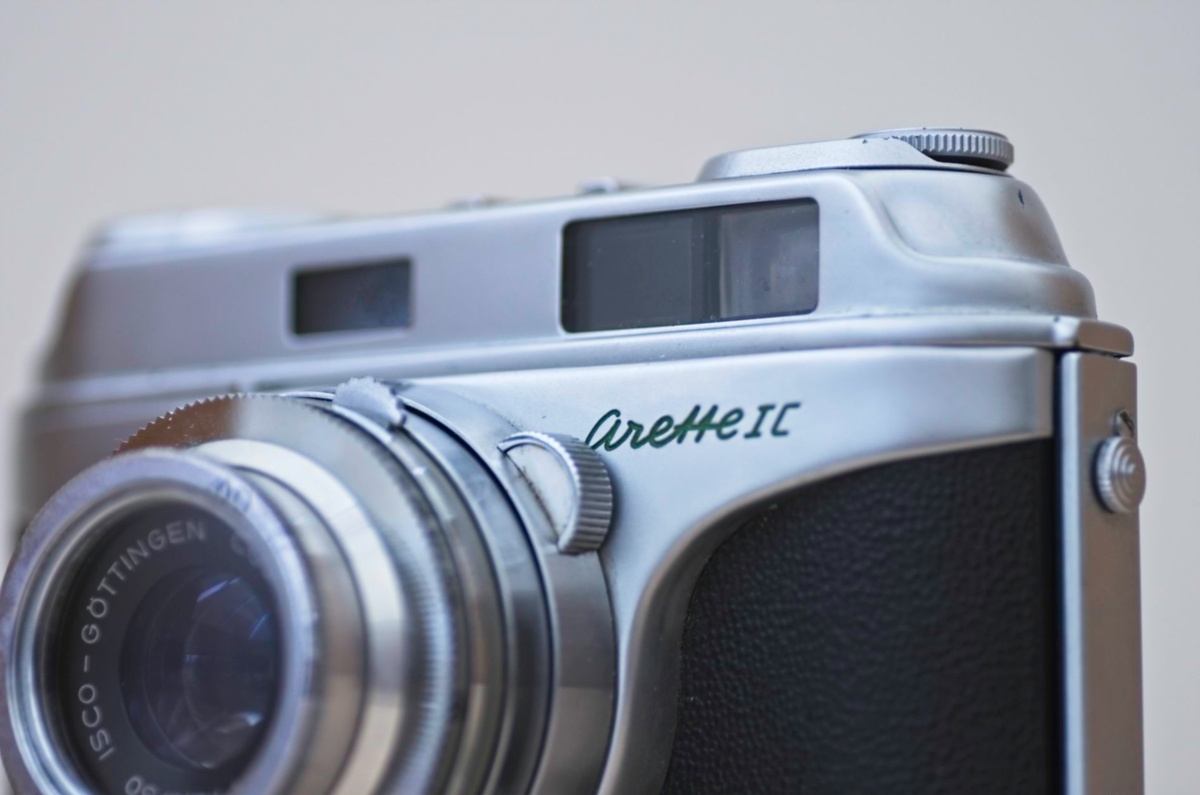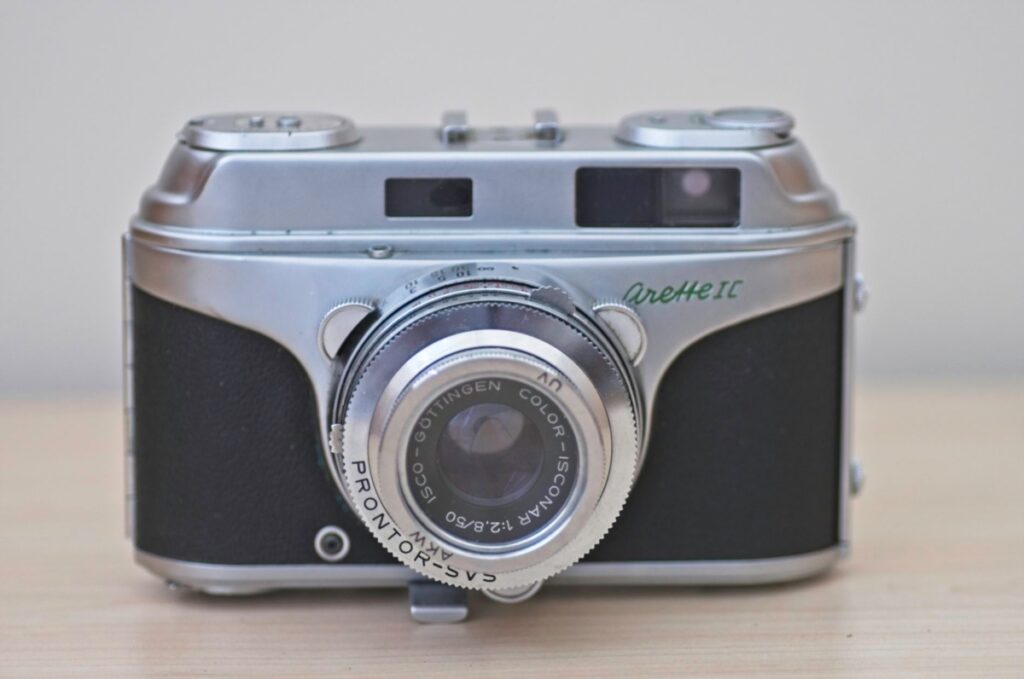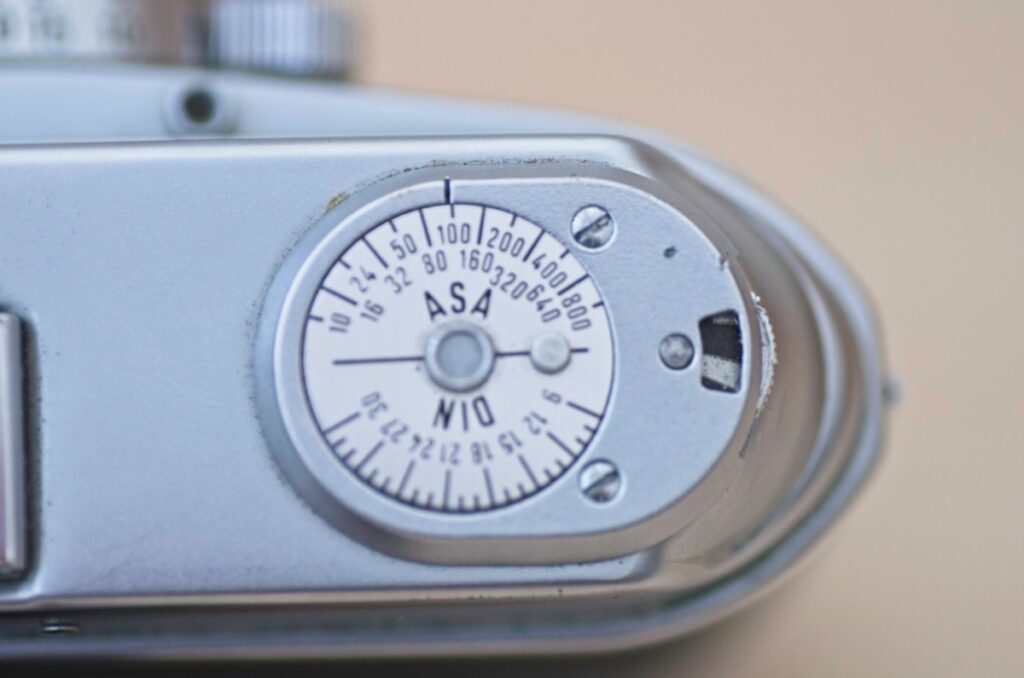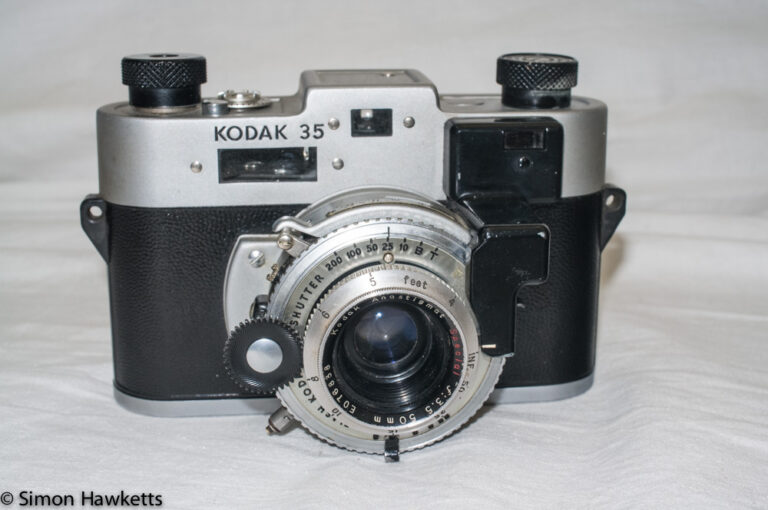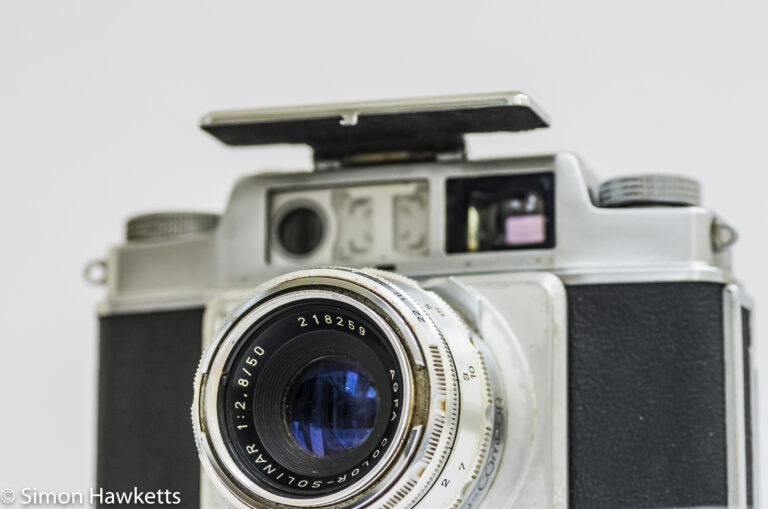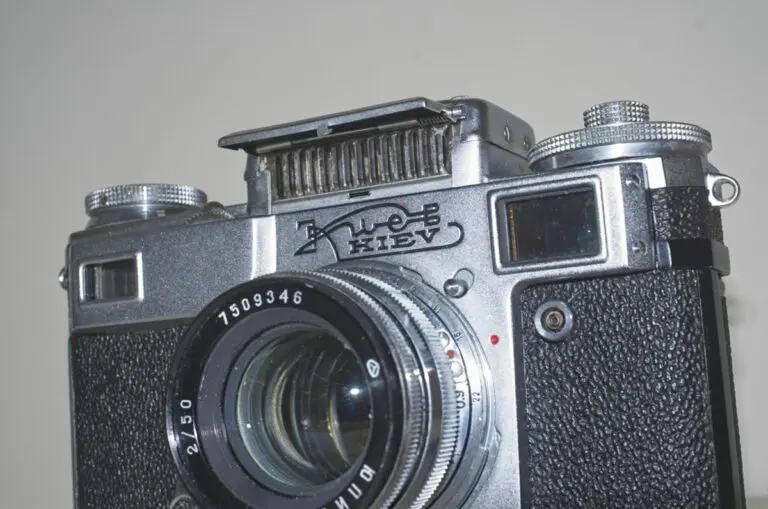The beautiful Arette 1C rangefinder from the 1950s
This is a look at a well-made, 35 mm, manual focus, rangefinder camera with stylish good looks which was made in the late 1950s – the Arette 1C.
My Arette 1C camera
As with so many of the cameras in my collection, my copy of the Arette 1C was an eBay buy.
I saw the camera on eBay as a ‘Buy it now’ sale for £12, and purchased it to add to my collection because I don’t have any cameras made by that manufacturer. It was sold with very little information, but from the picture on eBay it looked clean and tidy, so I paid for it and waited for it to be delivered.
When the package turned up a few days later, I found the Arette 1C was in pretty good shape, although the lens mount was very slightly loose on the body. This turned out to be because the ring which holds the lens to the body on the back of the lens mount was slightly undone, and was easily fixed.
Other than that slight issue, the rest of the camera is in good shape for it’s 60 odd year age. The shutter is a bit sluggish on the slow speeds, but this is almost certainly due to dirt and old grease in the shutter mechanism. If I was intending to use the camera I would give it a service, but as a display unit it’s fine as it is.
Pictures of the Arette 1C
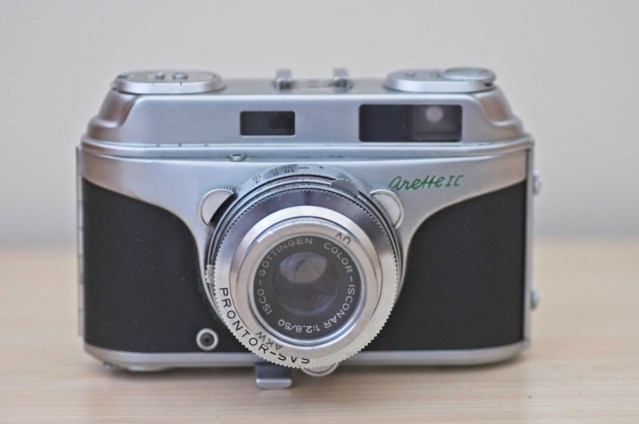
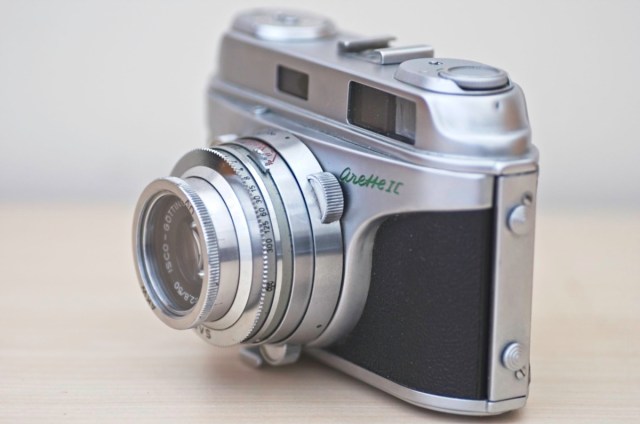

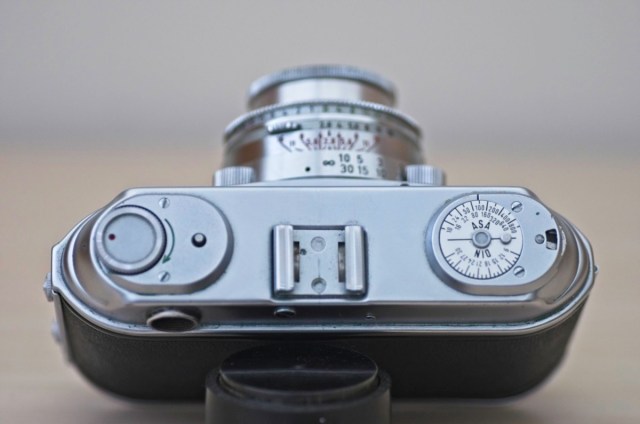
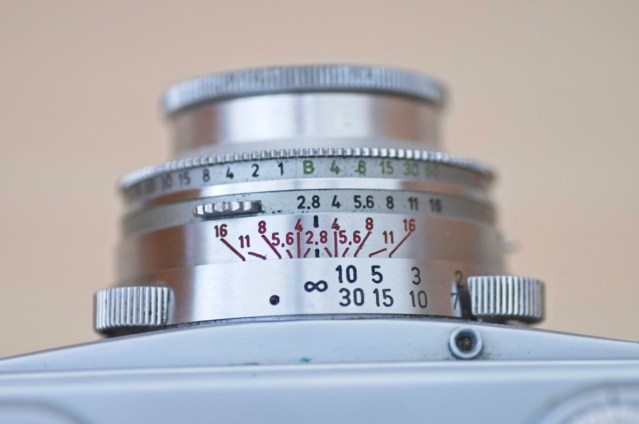
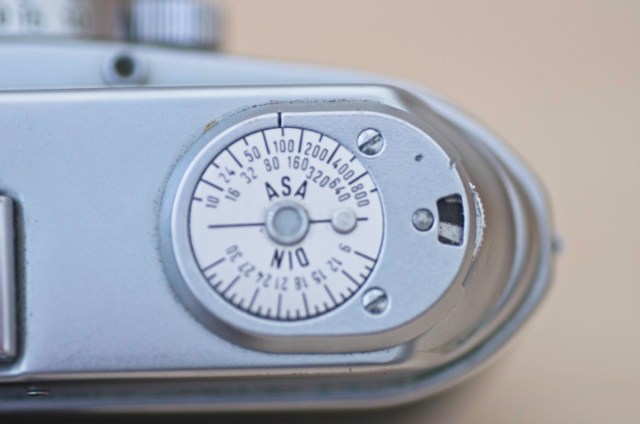
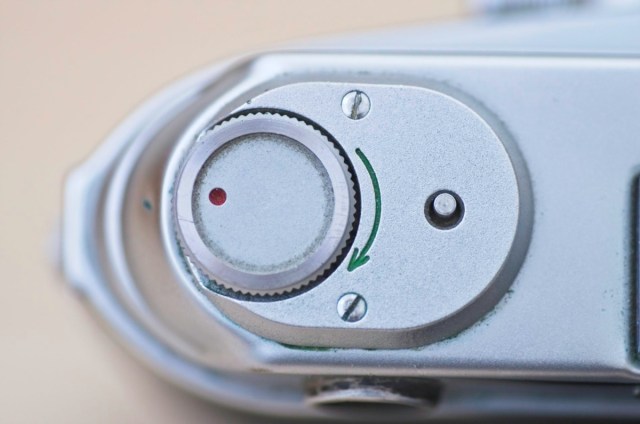
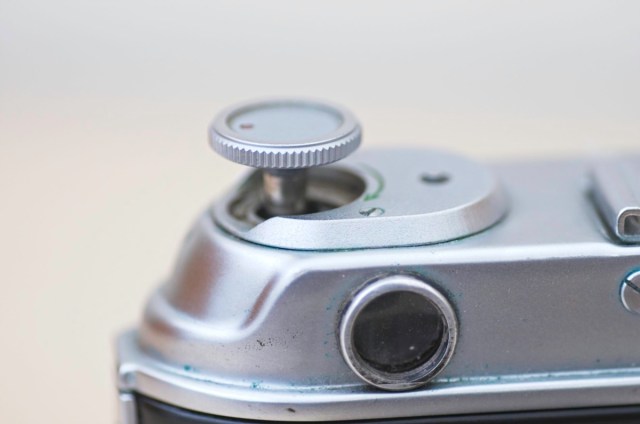
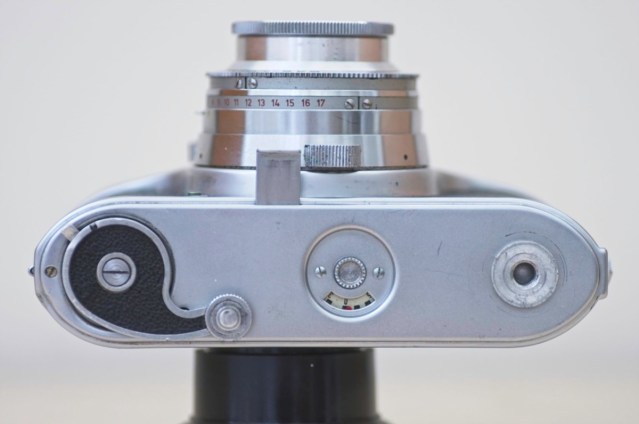
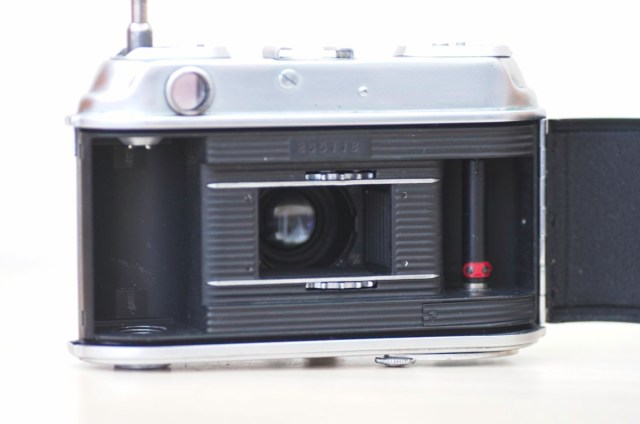
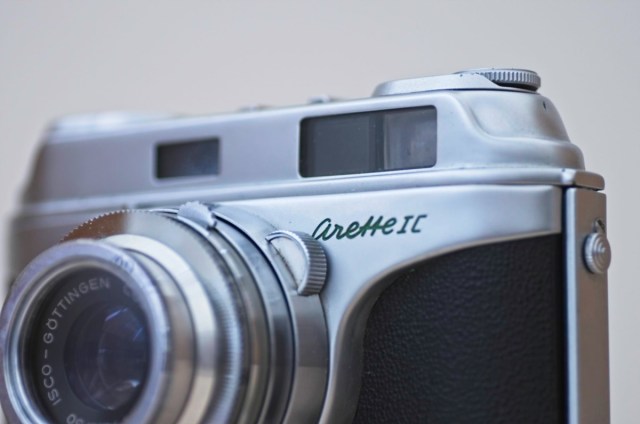
Arette 1C Description
This camera was made in Germany in the late 1950s – probably 1957 or 1958 and has a solid, well-made feel to it. Although not heavy, it is certainly more substantial than cheaper units like the Ilford Sportsman, which, although not a rangefinder like this camera, was made in the same time period.
The Arette 1C is a fairly well specified camera. As I implied above, it has a coupled rangefinder for focusing aid and a Prontor SVS shutter with 8 speeds + bulb. There is a mechanical frame counter, a film speed and type reminder, and the F/2.8 lens is an Isco-Gottingen, colour corrected, coated lens.
The design of the camera follows a pattern quite popular in the late 1950s by using the EV system to set the exposure. This allows the photographer to set the overall exposure (which would need to be via a light meter or Sunny 16 rule) and then shift that exposure over the number of combinations that the lighting conditions allow.
For example, if the light meter says use 1/60 sec @ f/11 (EV13) the camera can be set to this combination by pushing a small lever on the aperture ring and rotating the aperture / shutter speed rings until this setting is selected. Then the aperture and shutter speed rings can be moved together to select other combination which result in the same exposure – 1/30 @ f/16 or 1/300 @ f/5.6. It’s a clever system, and it’s mirrored today in the Program shift function of most DSLR and Mirrorless cameras.
I’ve now mentioned that this is a rangefinder camera twice, so I should cover that.
I guess most people who hit upon this page will probably know that a rangefinder is a focusing aid which works by showing a second image in the centre of the viewfinder, normally coloured with a tint of yellow or green (yellow in this case) which aligns with the main view when the subject is in focus. For anyone who doesn’t know – well, that’s what a rangefinder is.
The rangefinder in this camera is coupled to the focus control on the lens which makes focusing the camera pretty easy – you compose the picture, adjust the focus control until the yellow image coincides with the normal image and everything is set. As well as the yellow central section to aid focus, there are also yellow framing lines marked in the viewfinder which show the area which will be included in the picture you take.
In terms of the film transport, there is a frame counter mounted on the bottom of the camera in the centre, with a push-to-adjust central knurled ring to set it. The film advance lever is also mounted on the bottom, making this similar in that respect to many of the Kodak Retina reflex cameras. Once you get used to it, having the advance in this position is fine and quite easy to use.
The other useful feature of the camera regarding the film you are loading into it is the film type reminder and film speed reminder, which are both mounted on the top plate of the Arette 1C. On the opposite side, also on the top plate, is the film rewind knob, which is a small knurled control which can be popped up for easy use by pushing a small lever next to it.
Other useful additions to this camera are a flash sync socket, a cable release socket and a small table stand which pulls out from under the lens to supply some stability when the camera is placed on a table to use the self-timer and take a self-portrait.
Arette 1C Specification
- Arette 1C Rangefinder camera
- Made in Germany in about 1958
- Prontor SVS 8 speed shutter 1 sec to 1/300 sec + bulb
- Self Timer
- Bottom mounted film advance lever
- Film type reminder and film speed reminder
- Pop-up film rewind on top plate
- Cable release socket
- Flash Sync socket on front panel
- Sync for X or M
- Standard 35 mm film
- Coupled rangefinder for focus assistance
- Bright line frame in viewfinder
- Flash cold shoe mounted on top plate
- Table stand pulls out to support camera
- Off centre tripod socket
- 50 mm f/2.8 Isco-Gottingen lens
- Body Serial No: 255118
Discover more from Everything Vintage
Subscribe to get the latest posts sent to your email.

